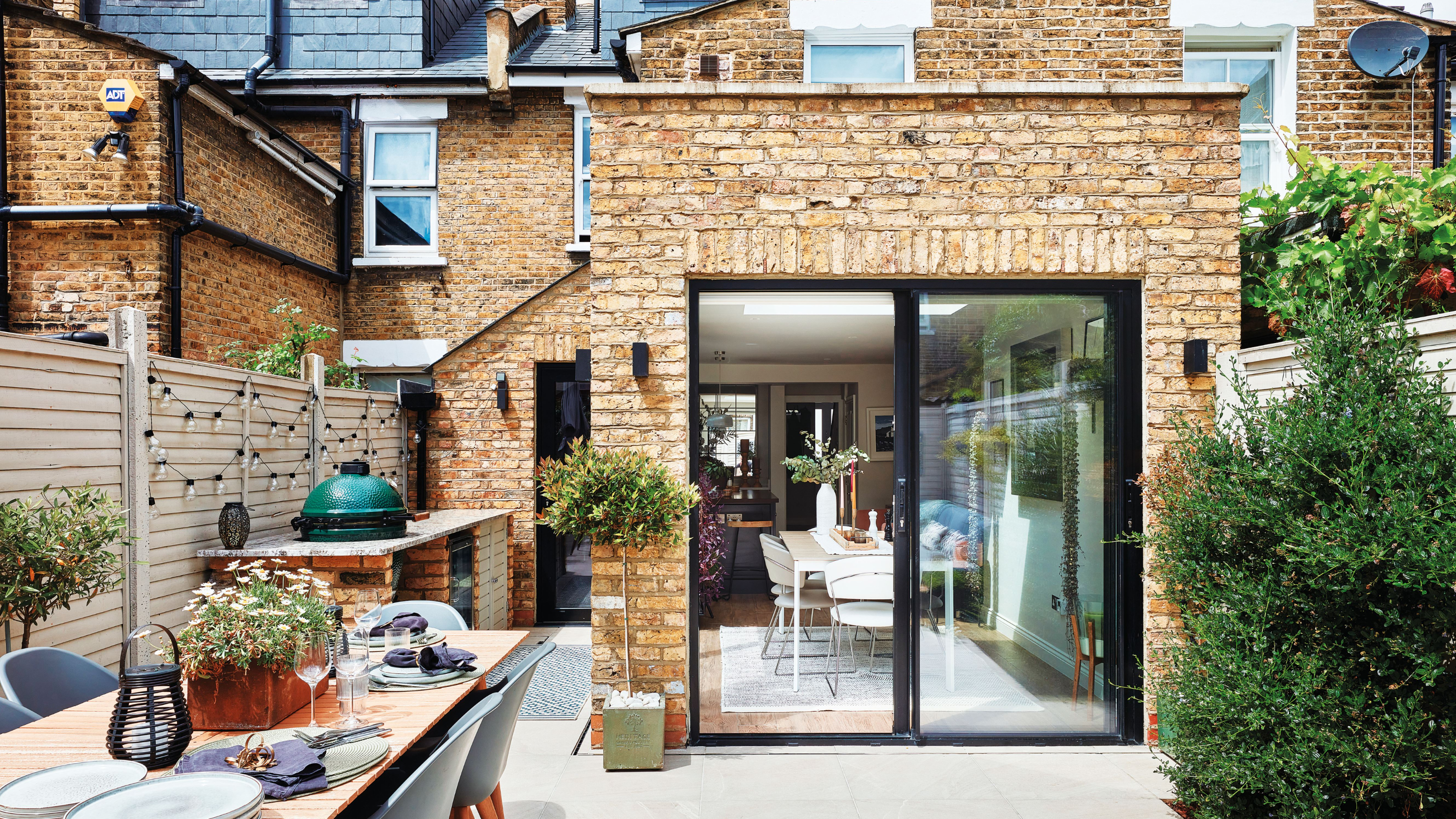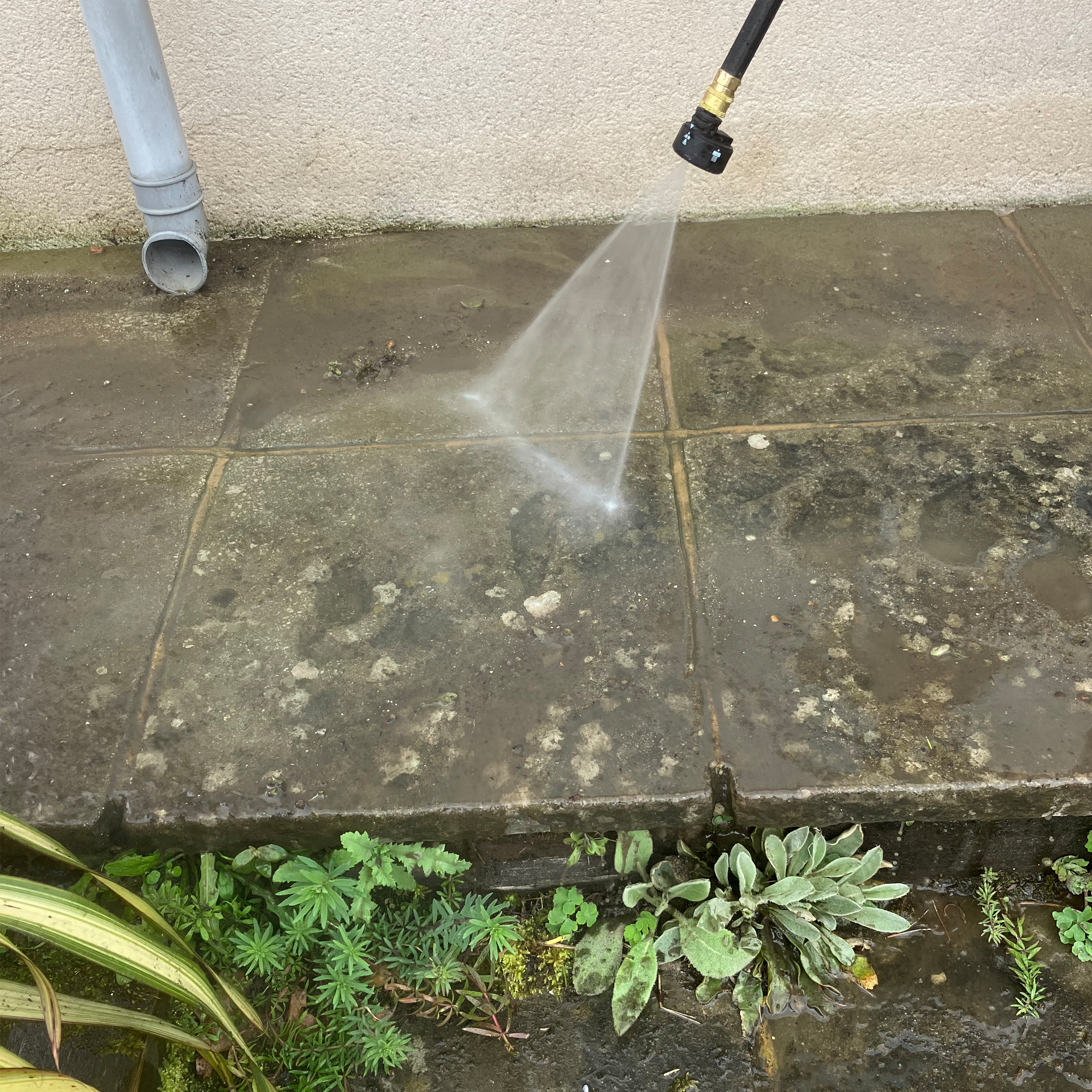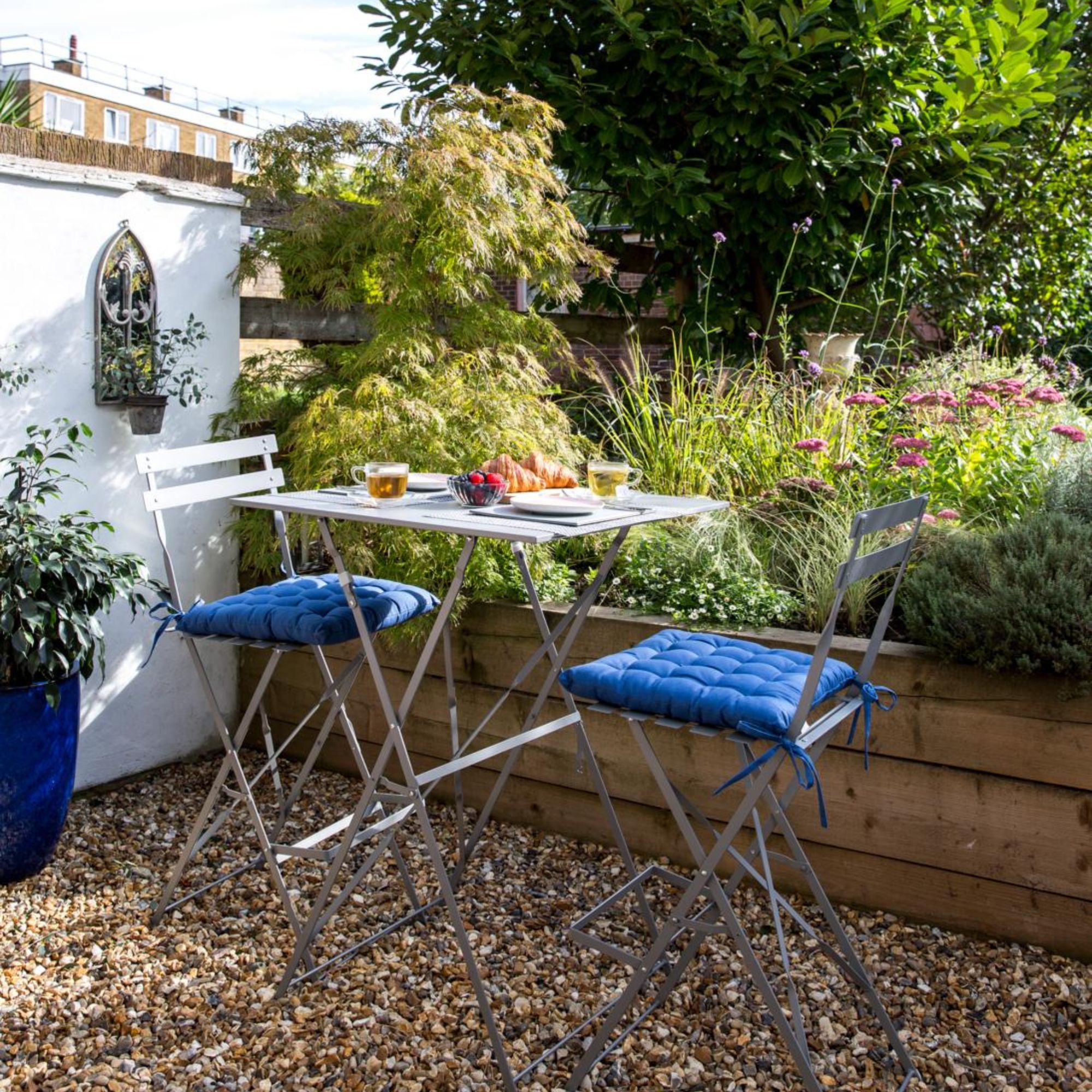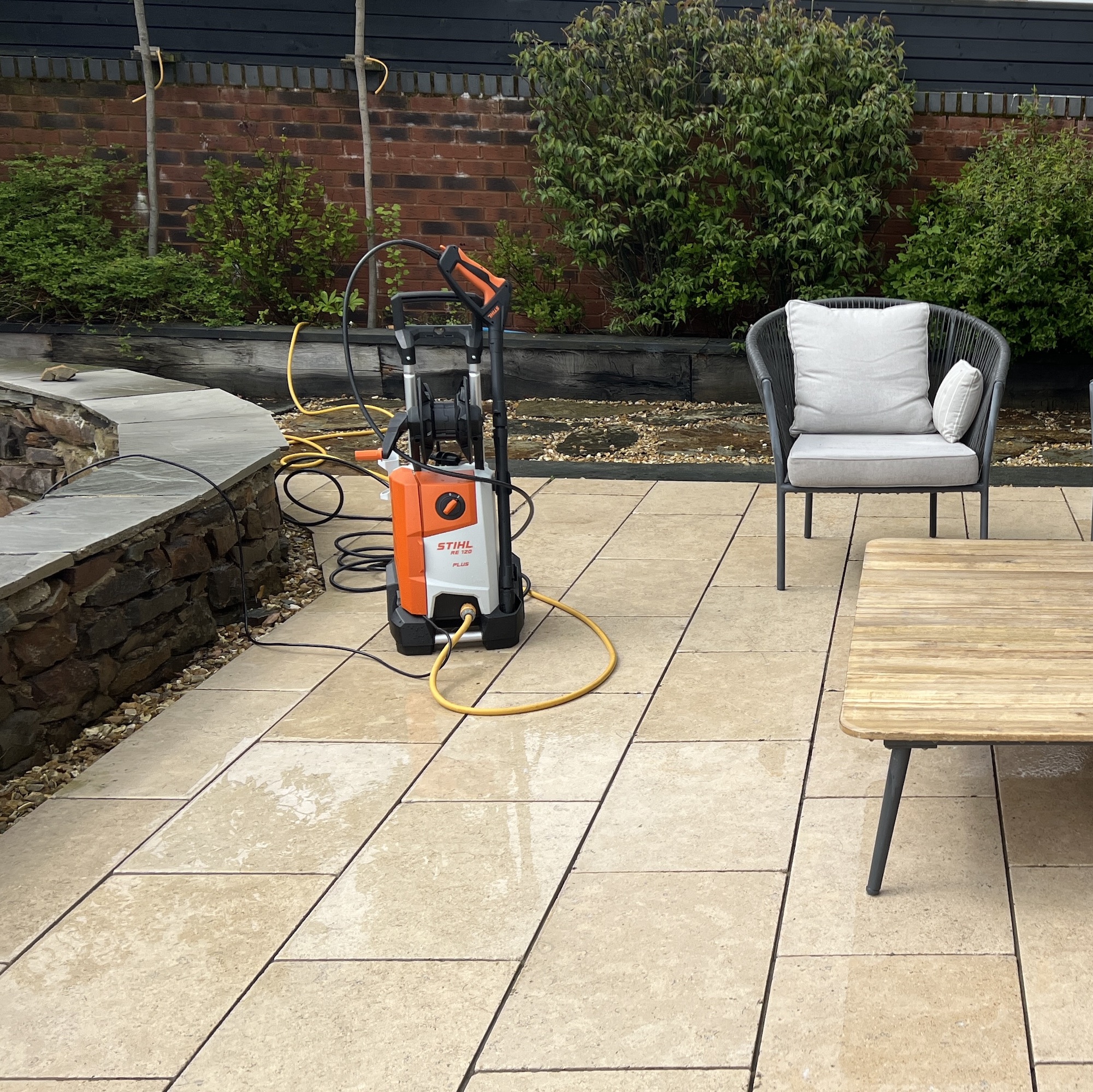How to use a pressure washer to refresh your patio and garden furniture after winter
Take the pressure off cleaning with a pressure washer


If you’re wondering how to use a pressure washer, you’re not alone. To some, the idea of shooting highly pressurised jets of water out of a small contraption can seem a bit daunting. But trust us, this garden gadget is definitely worth it.
At Ideal Home, we’ve had the pleasure of testing some of the best pressure washers on the market, and we’ve seen first-hand how they can revolutionise your outdoor cleaning adventures. After all, what would take hours to clean by hand can take just ten minutes with a pressure washer. This leaves you more time to focus on the many other garden ideas you have up your sleeve.
But to truly appreciate the cleaning powers of a pressure washer, you need to use it correctly. That’s why we’ve consulted with experts to understand how to use a pressure washer, whether you’re using it to clean your patio or your garden furniture.
How to use a pressure washer
‘A pressure washer is a versatile tool that can be used for various cleaning tasks due to its ability to generate a high-pressure stream of water,’ explains Nick Ee, product and training manager at BLACK+DECKER. But if you’re not sure how to use a pressure washer, check out our guide below.
What you'll need
- Pressure washer - our favourite is the Karcher K4 Full Control Home Pressure Washer from Amazon
- Cleaning agent - like this Diall Pressure Washer Detergent from B&Q
- Garden hose - like this Hozelock Starter Hose Set from Argos
- Broom
- Safety goggles
- Closed-toe shoes
How to use a pressure washer to clean a patio
Over the winter months, dirt and grime from the wind and the rain will undoubtedly build up on your patio. This will result in discolouration and staining and can make what is often a very expensive patio look worn and unloved. So, knowing how to clean a patio is key.
While you can clean a patio without a pressure washer, using a pressure washer will always be more effective. If you're concerned about how much water a pressure washer uses, then you might find it's less than you think, anyway.
1. Prep the area
‘Pressure washers are seen as essential tools for cleaning patios, garden stones, gravel and pebbles,' explains Tom Clifford, director of Garden Stone. ‘Not only does it help to remove dirt, moss and algae build-up, but it also revitalises the appearance of your outdoor spaces by brightening it up and deep cleaning.'
But before you make the most out of your pressure washer, you need to prep the area - and you need to prep yourself.
If you haven’t already, learn how to kill weeds so that you can remove them (and the full root) from the grout, and finish by brushing any loose debris using a garden broom.
As pressure washers can be dangerous, you should also ensure that you protect yourself when using this piece of kit. Tom says, ‘Always wear protective gear when using a pressure washer, such as goggles and gloves.’
Wearing closed-toe shoes won't go amiss, either.

2. Choose your cleaning agent
One of the biggest perks of a pressure washer is that it can be used as a stand-alone cleaner, and the combination of pressure and water alone should be enough to clean your patio. However, you could also add a cleaning agent into the mix if you wanted to.
Many of the best patio cleaners can be used with a pressure washer, and they will ensure an even deeper clean. These can be used either within the pressure washer tank itself, or you could pour them onto the patio before spraying with the pressure washer.
Just make sure that you consult your pressure washer’s instruction manual to double-check that it's suitable before you buy anything. Tom echoes this, saying, ‘Only use appropriate detergents with the pressure washer to ensure optimal performance.’

3. Set up the pressure washer
When you’ve prepped the area and chosen your cleaning agent, you then need to set up the pressure washer.
While all pressure washers are different, you should typically start by attaching the high-pressure hose that comes with the garden gadget and then attach your own garden hose to the other side of it. Then, you can attach the other end of the garden hose to your outside water tap.
Afterwards, set up the spray gun and plug the pressure washer into the nearest mains plug socket (but make sure it’s still turned off on the actual appliance). Then, turn on the water tap and press the trigger. This will flood the pressure washer with water, creating a high-pressure flow of water that is ready to go as soon as you press the ‘on’ button.
Of course, always check your instruction manual for the exact set-up process.
4. Choose the right nozzles and attachments
Most pressure washers come with multiple nozzles and attachments. With this in mind, you need to make sure you choose the right nozzles and attachments to clean a patio.
Tom has offered some guidance on this. ‘On small, delicate surfaces (pebbles) = Low pressure, wider nozzle. Tough stains on concrete or paving stones = Higher pressure, more well-concentrated nozzle.’
However, it’s important to note that this isn’t a one-size-fits-all guide. Nick adds, ‘If you’ve recently invested in a pressure washer, I would recommend playing around with the different pressure settings as this is crucial to ensure effective cleaning without damaging surfaces.’
‘Most pressure washers will come with adjustable pressure settings, spray nozzles and interchangeable tips. First, I would advise reading the user manual provided by the manufacturer, as this will provide specific instructions and guidelines for your particular pressure washer model.’

5. First, test a small area
When you’ve prepared the area and chosen the right attachment, you may want to get cracking right away. But you should always test a small area of the patio first to avoid ruining your patio idea in the process.
‘Always test a small area to gauge the level of pressure needed and adjust accordingly,’ explains Tom. This is especially important if your patio is made from softer stone that could be damaged by water pressure that’s too high or too concentrated.
This test patch is also a great chance to see whether you’ve used enough cleaning agent.
6. Clean the rest of the patio
If you’re confident that you’ve chosen the right level of pressure, you can then clean the rest of the patio.
While you don’t necessarily need a technique to do this, most experts would advise that you work in a sweeping motion, overlapping your cleaning area as you do so.
You should also make sure that you get into the corners so that you can clean every nook and cranny. Just ensure you don’t get too close to the pressure washer yourself.
Tom says, ‘Always stand back from the pressure washer and keep a safe distance from the surface you're cleaning.’
Then, allow it to dry and enjoy your clean patio!
How to use a pressure washer to clean garden furniture
Although pressure washers are perfect for cleaning patios, you can also use a pressure washer to clean the best garden furniture. This is a great way to give them some TLC before the spring and summer months and to keep them free from mould, mildew, and even rust.
Knowing how to clean garden furniture and what the most durable type of garden furniture is is key when it comes to using this gardening appliance, though.
1. Assess the material
‘A pressure washer can be a great investment for cleaning your garden furniture, due to the fact that it can quickly and effectively clean up a lot of dirt, mud and even mildew,’ explains Steve Chilton, garden expert at LeisureBench.
However, you really need to assess the material of your garden furniture before using a pressure washer on it. This is especially true if you have some of the best wooden garden furniture.
Steve says, ‘When it comes to softer materials such as wood and wicker, I wouldn't recommend using a pressure washer unless it has a really low-pressure setting and a wide-angle nozzle. This is because it can damage the material of the furniture, which isn't worth it.’
‘When it comes to harder pieces of outdoor furniture such as metal or plastic furniture, you can use your pressure washer on a higher setting with a narrow-angle nozzle. This means that your pressure washer is more precise, and it'll be more effective on this kind of outdoor furniture.’
All is not lost if you have wooden garden furniture, though.

2. Inspect your furniture
If you have harder garden furniture that a pressure washer can clean, it’s also important to inspect your furniture before you decide that it’s the best course of action.
In fact, this is essential for those with old garden furniture or those who don’t use garden furniture covers.
‘Before using your pressure washer on anything, I always recommend inspecting the furniture for any cracks, chips, loose screws or any other piece of damage that could be made worse by the intense force of a pressure washer,’ advises Steve.
‘If you think your furniture has some of this damage already, make sure to avoid the affected areas of the furniture, or simply wash the whole thing by hand instead just to be safe.’
3. Set up the pressure washer
This step is the same, no matter whether you’re using a pressure washer to clean a patio or your garden furniture. So, scroll back up to see how you should properly set up a pressure washer for this task.
4. Test a small section
Just as you would if you wanted to use a pressure washer to clean a patio, you should also test a small section if you want to use a pressure washer to clean garden furniture.
And while there are some impressive garden furniture deals out there, this testing process will ensure that you don't have to throw away your old garden furniture prematurely.
Steve says, ‘You should also do a small test of your pressure washer before you use it on the whole item by using it on a small, inconspicuous section of the furniture. If the pressure washer damages this small section, then don't use it on the rest of the piece.’

5. Continue the process
When you’re 100% confident that it’s safe to continue the process, you can then clean the rest of your garden furniture with the pressure washer.
Make sure you keep the pressure to a minimum, and don’t be afraid to put the pressure washer down and clean your garden furniture by hand if you need to - especially if you want to get into small corners.
Then, let the furniture air dry before using it again.
6. Clean and store your pressure washer correctly
If you want to continue making the most of your pressure washer to clean your patio or your garden furniture, you need to take care of the gadget that’s doing the cleaning for you.
Because of this, you need to make sure that you clean it as often as you can and store your pressure washer correctly.
Steve says, ‘Pressure washers need to be cleaned and maintained regularly in order to make sure that you're getting the right strength every time. If your pressure washer is dirty and clogged up, then it's likely your water pressure won't be as strong. I recommend keeping it somewhere dry, preferably inside, away from the elements outdoors.’

FAQs
Do you turn water on before starting pressure washer?
Yes, you should turn the water on before starting a pressure washer. You should also make sure that your pressure washer is plugged in at the mains before you turn on the water.
When you’ve turned the water on, you should then press the pressure washer trigger while it’s still turned off. This will allow the garden gadget to fill with water, ready for when you turn it on and use it for the first time.
Can you pressure wash with a garden hose?
Yes and no. While you can buy hose attachments to clean patios and garden furniture, they’re rarely going to be as powerful. Most pressure washers offer around 2,000 PSI of cleaning power, while the average pressure from a garden tap offers around 40 to 60 PSI of power.
A won’t improve that PSI at all, but a pressure washer can. So, if you want to improve the cleaning power, a pressure washer is definitely a better choice.
So, what will you be pressure washing this weekend?
Get the Ideal Home Newsletter
Sign up to our newsletter for style and decor inspiration, house makeovers, project advice and more.

Lauren Bradbury has been the Content Editor for the House Manual section since January 2025 but worked with the team as a freelancer for a year and a half before that. She graduated with a Bachelor’s degree in English and Creative Writing from the University of Chichester in 2016. Then, she dipped her toe into the world of content writing, primarily focusing on home content. After years of agency work, she decided to take the plunge and become a full-time freelancer for online publications, including Real Homes and Ideal Home, before taking on this permanent role. Now, she spends her days searching for the best decluttering and cleaning hacks and creating handy how-to guides for homeowners and renters alike, as well as testing vacuums as part of her role as the Ideal Home Certified Expert in Training on Vacuums, having spent over 110 hours testing different vacuum models to date!
-
 Will a conservatory add value to your home and how can you maximise it?
Will a conservatory add value to your home and how can you maximise it?This is what the pros say
By Amy Reeves
-
 I’ve been looking for a new signature scent for my home and The White Company's new fragrance is the exact summer holiday smell I needed
I’ve been looking for a new signature scent for my home and The White Company's new fragrance is the exact summer holiday smell I neededSantorini smells fresh, summery and sophisticated
By Kezia Reynolds
-
 How to remove algae from garden walls in five steps – and the cleaning product experts rave about for tackling it fast
How to remove algae from garden walls in five steps – and the cleaning product experts rave about for tackling it fastExperts share their top tips for getting garden walls algae-free
By Katie Sims